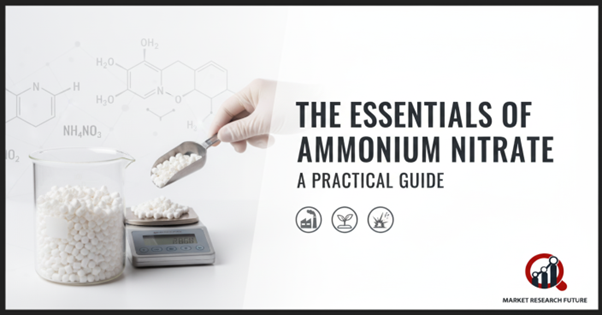Ammonium Nitrate - Things You Should Know

What is Ammonium Nitrate?
Ammonium nitrate (AN) is a type of salt that looks like crystals and is made from ammonia and nitric acid. Farmers love it because it gives crops nitrogen, and it has been a cheap fertilizer for a long time. It has also been used in controlled energetic applications and in some industrial formulations because it releases oxygen when it breaks down. Because it is chemically simple and easy to find, it is a workhorse chemical that needs to be treated with respect.
Applications and Challenges
Ammonium nitrate is a key part of modern farming because it is a good source of nutrients that help plants grow. It was also looked into in the past for harmless technical uses, like making gas, because it is cheap and can make non-toxic gases if handled carefully. The same things that make ammonium nitrate useful—its oxygen content and energy potential—also make it dangerous when things go wrong. When mixed with flammable contaminants, kept in a small space, or exposed to high heat, it can go from being a safe material to one that causes fast, destructive reactions.
Chemistry in simple terms
On the chemical level, ammonium nitrate comprises a combination of an oxidizing component along with a fuel component in extremely close proximity. When agitated or activated under adverse circumstances, the equilibrium can move toward speedy decomposition and oxidation. This chemistry is good in safe situations, but in dangerous ones, it can speed up combustion or make the area more explosive. With regard to this dual nature, many places have special rules for how to handle AN.
Storage and Handling—Ideas that are Safer, not Rules
To keep ammonium nitrate safe, it needs to be designed and managed carefully. This means keeping it away from things that don't mix with it, not letting oils or organic matter get on it, not letting it get too hot for too long, and making sure that it is stored in a way that doesn't let it cake up or get stuck in large masses. Modern methods focus on reducing risk by using engineering controls, monitored storage areas, and clear rules for how to do things. Responsible stewardship means treating AN like any other potentially dangerous industrial material and making sure it is stored and moved with care.
Regulatory Response and Safety Improvements (2025)
Following a number of high-profile industrial accidents, regulators and businesses all over the world have made rules stricter for how to handle and store ammonium nitrate. The focus has changed to better labeling, better oversight, stricter separation from fuels and contaminants, and better planning for emergencies. At the same time, the private sector has put money into safer fertilizer formulas, different ways to move nitrogen, and tools that help trace the supply chain. More and more, technologies that can detect contamination or strange thermal behavior are being used to give early warnings and lower the chances of disasters.
Safety in the Community and Public Awareness
Being aware is important. Communities near storage or processing sites expect transparency and clear emergency planning. More and more, companies that make, store, or use ammonium nitrate are making safety information public, working with local responders, and getting third-party audits. This mix of rules, technology, and getting people involved in the community helps lower risks and gain people's trust.
Conclusion
Ammonium nitrate is still a useful chemical for farming and industry, but it does have some risks. It is useful because of its chemical properties, but these must be carefully controlled. For example, it must be kept separate from materials that are not compatible, and modern monitoring methods must be used. Recent years have seen meaningful progress in safety, regulation, and alternative technologies, but vigilance is still required. Ammonium nitrate can be used in food production and industry without harming people or communities if it is handled with care and in accordance with best practices.

Leave a Comment